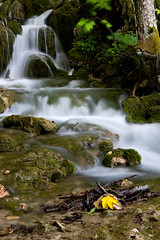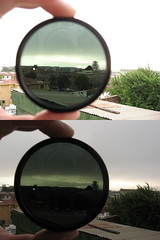Why are they called Neutral?
Neutral Density filter are, in essence, just grey filters used to reduce the amount of light passing through the lens and hitting your camera’s sensor/film. So, in short, we use them in photography the same way you would wear sunglasses in real life!
They are said to be Neutral because they do not affect the colors in the resulting pictures, they filter out all colors equally.
Why use Neutral Density filters?
Since ND filters will result in less light they can affect our exposure in 2 drastic ways
- A wider aperture: Assuming a fixed shutter speed, less light would mean wider apertures to yield the same exposure
- A slower shutter: Assuming a fixed aperture, less light should be, in this case, compensated by a longer exposure time or slower shutter speed
When to use Neutral Density filters?
Building on the two scenarios we have just discussed ND filter can be very helpful in case you need
- A shallower Depth Of Field: Suppose you are shooting in broad daylight a portrait and you want a shallow DOF to isolate you subject. Depending on the camera you are using, you might quickly be limited by the maximum shutter speed you can set. A Neutral Density filter will allow you to reach bigger apertures for that same maximum shutter speed.
-
A slower shutter speed: A typical example is if you are shooting waterfalls!
We all like to capture that milky water effect but, to get it, you need somehow slow shutter speeds. Speeds that it is not possible to have on a sunny or even light overcast day. Here too ND filters are our friends eating up that extra light and allowing us to dial down to the speeds we want
When NOT to use Neutral Density Filters
I won’t go over the obvious million of situations when you do not want to use ND filers, however I want to pin point that ND filters should be used only when you want to equally reduce light passing through your lens in all the scene you are photographing. That is why, in the beginning of this post, I told you they should not be confused with ND Grad filters. ND filters are NOT useful if you are shooting scenes in which different objects are lit differently and you need to expose all of them correctly.
Understanding Neutral Density Filters
ND filters have “gradings” depending on the amount of light they cut. A higher grading means that the filter will filter more light allowing you wider apertures or slower shutter speeds.
They come, AFAIK, in 2 types of notations
- 0.3 0.6 0.9 ND: The number here designates the density of the filter. Every 0.3 will make you lose one stop of light. So a 0.3ND will cut 1 stop of light 0.6 2 stops etc…
- ND2 ND4 ND8: Another notation for the same logic. The notation here is based on binary numbers 2=21 i.e 1 stop of light. 4=22 i.e. 2 stop of light etc…



No comments:
Post a Comment